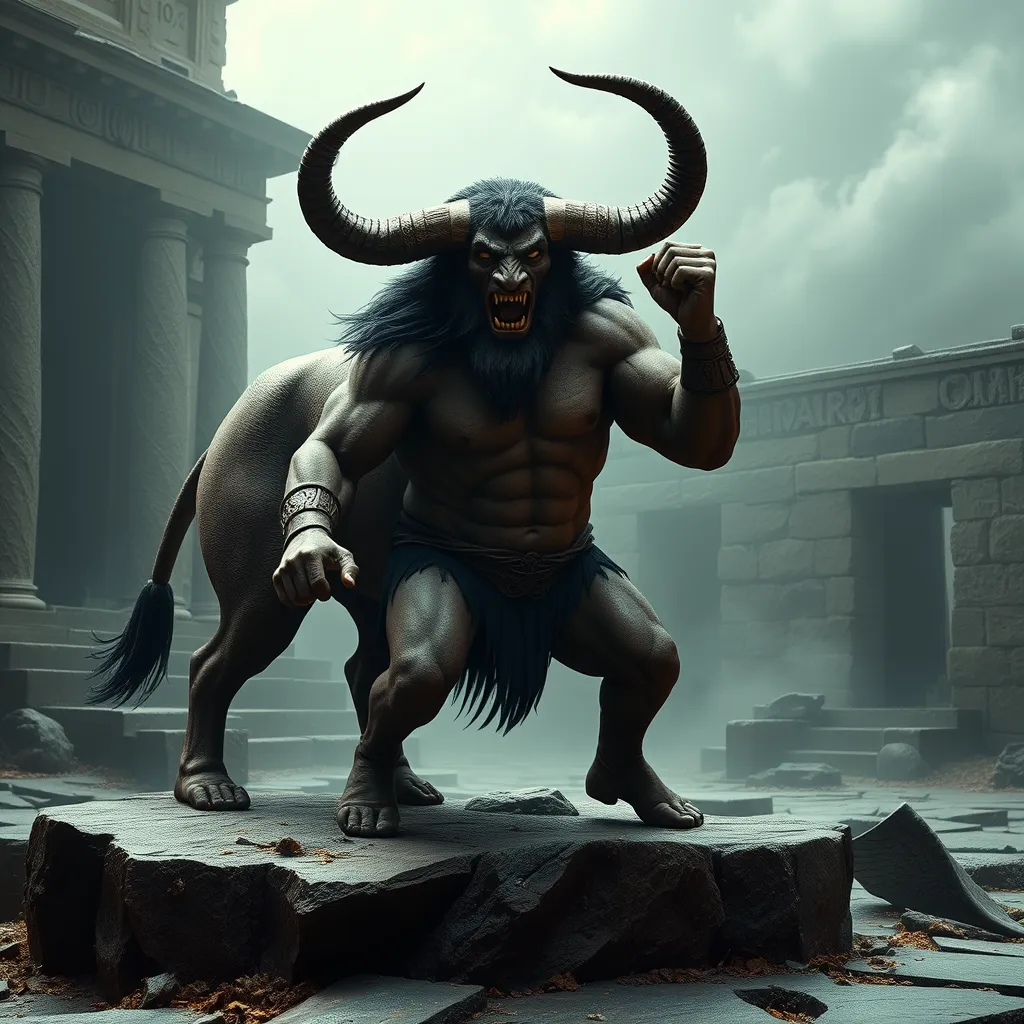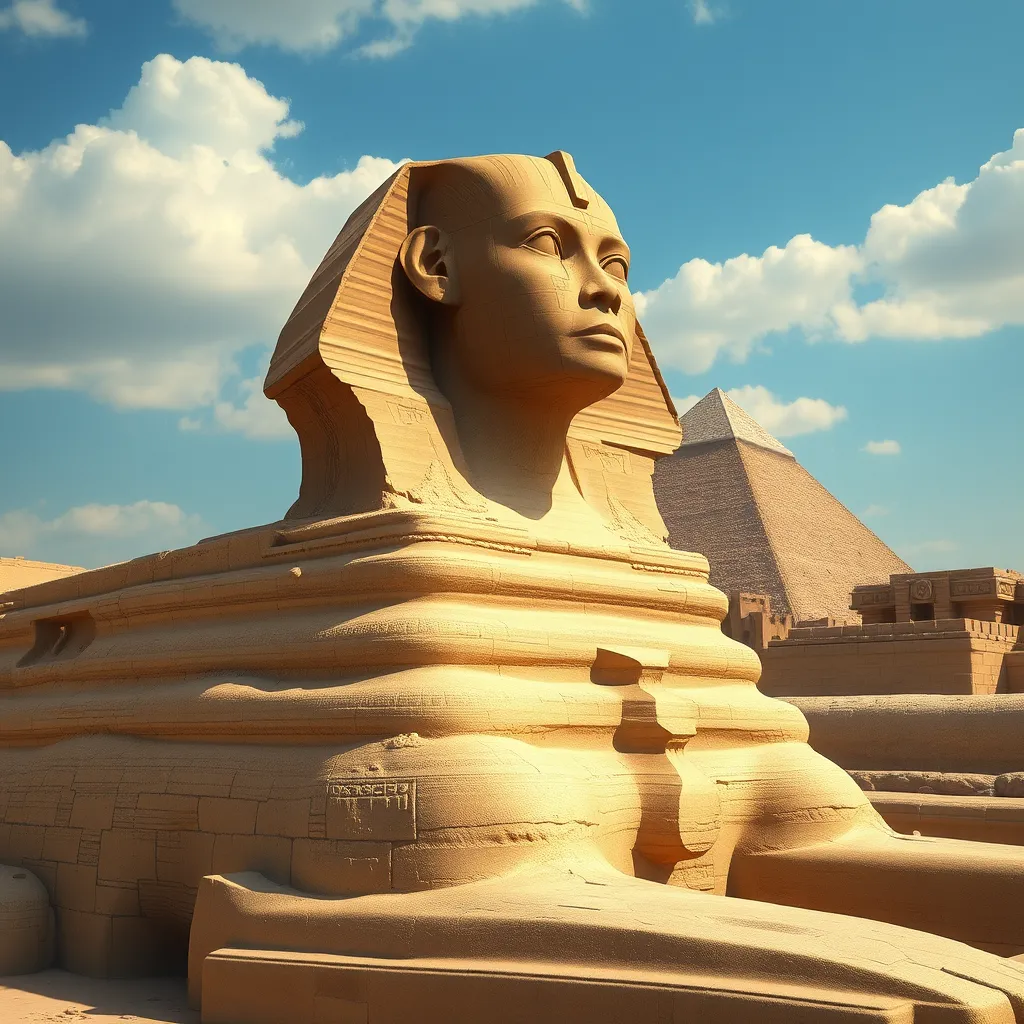The Minotaur in Roman Mythology: Adapting the Greek Myth for a New Audience
I. Introduction
The Minotaur, a creature with the body of a man and the head of a bull, is one of the most striking figures in Greek mythology. This myth, rooted in the ancient culture of Greece, tells a tale of complexity, heroism, and the struggle between human beings and monstrous forces. The story of the Minotaur has transcended time and geography, becoming a staple of cultural and literary contexts throughout history.
In Roman mythology, the story of the Minotaur underwent significant adaptations, reflecting the values and beliefs of Roman society. This article explores the adaptation of the Minotaur myth within the framework of Roman mythology, examining its origins, cultural significance, and enduring legacy.
II. The Origins of the Minotaur Myth
The Greek version of the Minotaur myth begins with King Minos of Crete, who, desiring to prove his divine right to rule, prayed to Poseidon for a magnificent bull. When the bull appeared, Minos failed to sacrifice it, instead keeping it for himself. Enraged, Poseidon cursed Minos’s wife, Pasiphae, causing her to fall in love with the bull. From this union, the Minotaur was born, a monstrous being that could not be allowed to roam free.
To contain the creature, Minos commissioned the architect Daedalus to build the labyrinth, an intricate maze designed to hold the Minotaur. Every nine years, seven young men and seven young women were sent into the labyrinth as a tribute to Minos, where they would meet their fate at the hands of the Minotaur. The hero Theseus eventually volunteered to confront the beast, aided by Minos’s daughter, Ariadne, who provided him with a thread to navigate the labyrinth.
Key characters in this myth include:
- Theseus – the hero who slays the Minotaur.
- Ariadne – the princess who helps Theseus escape the labyrinth.
- King Minos – the ruler of Crete, representing authority and divine right.
- The Minotaur – a symbol of chaos, born from the sins of the parents.
Themes such as heroism, sacrifice, and the struggle against monstrous forces dominate the narrative, making the Minotaur a powerful symbol in Greek mythology.
III. The Roman Adaptation of the Minotaur
As the Romans adapted Greek mythology, they often reinterpreted myths to align with their own cultural values and historical context. The Minotaur myth was no exception. In Roman adaptations, the emphasis shifted slightly from the tragic elements of the original tale to themes that resonated with Roman ideals of strength, order, and civic duty.
While the essential storyline of the Minotaur remained intact, Romans emphasized different aspects of the characters and themes. For instance:
- The portrayal of Theseus often highlighted his role as a symbol of Roman virtue and civic responsibility.
- Ariadne’s role was sometimes downplayed, reflecting the male-centric narratives prevalent in Roman culture.
- The Minotaur was increasingly viewed not just as a monster but as a representation of the chaos that threatened the order of society.
This adaptation illustrated how the Romans utilized Greek myths to create narratives that reflected their values, showcasing a blend of reverence for the original stories and an eagerness to adapt them to fit their cultural identity.
IV. The Cultural Significance of the Minotaur in Roman Society
In Roman society, the Minotaur emerged as a potent symbol of fear and chaos. The labyrinth, which housed the creature, represented the complexities and dangers of life, mirroring the political and social labyrinth that Romans navigated daily.
In art and literature, the Minotaur became a recurring motif, depicted in various forms:
- Art: Sculptures and mosaics illustrated the struggle between Theseus and the Minotaur, emphasizing the triumph of order over chaos.
- Literature: Roman poets and playwrights drew upon the Minotaur myth to explore themes of heroism, fate, and the human condition.
The Minotaur also played a role in shaping Roman identity and values, embodying the virtues of bravery and resilience in the face of chaos, which were essential to the Roman ethos.
V. The Minotaur in Roman Literature
Prominent Roman texts featuring the Minotaur include works by poets such as Ovid and playwrights like Seneca. These authors engaged with the myth to reflect on human nature and societal issues.
In Ovid’s “Metamorphoses,” the Minotaur is explored within the broader context of transformation, illustrating the consequences of desire and the complexities of identity. Seneca, on the other hand, used the Minotaur as a metaphor for the internal struggles of humanity, emphasizing the psychological aspects of the myth.
The influence of these Roman poets and playwrights on the myth was profound:
- Their interpretations often highlighted moral lessons, using the Minotaur as a cautionary tale.
- They expanded the narrative to include reflections on destiny, fate, and the consequences of human actions.
As a result, the Minotaur became a versatile figure in Roman literature, representing not only a monstrous entity but also the darker aspects of human nature.
VI. The Minotaur’s Legacy and Modern Adaptations
The legacy of the Minotaur myth continues to resonate in contemporary storytelling, influencing a wide range of media. From novels to films, the archetype of the Minotaur has found new life in modern narratives, often reflecting current societal issues.
Examples of the Minotaur’s presence in modern media include:
- Films: Movies like “Pan’s Labyrinth” and “Percy Jackson & The Olympians” incorporate elements of the Minotaur myth, reimagining the creature in new contexts.
- Books: Novels such as “The Minotaur Takes a Cigarette Break” explore the Minotaur’s symbolism in contemporary society.
The Minotaur’s continued relevance in popular culture speaks to its adaptability as a symbol of the human experience, embodying themes of struggle, identity, and the confrontation with chaos.
VII. Comparative Analysis: Greek vs. Roman Interpretations
When comparing Greek and Roman interpretations of the Minotaur, several key differences emerge:
- Themes: Greek versions often emphasize tragedy and fate, while Roman adaptations focus on virtue and order.
- Character Portrayals: Theseus is often more heroic in Roman texts, while the Greek version portrays him with more complexity and flaws.
- Cultural Values: The adaptations reflect the Romans’ desire for civic duty and order, contrasting with the Greeks’ exploration of individual destiny and moral ambiguity.
These differences illustrate how the adaptations were shaped by the respective cultural values of ancient Greece and Rome, revealing the evolving nature of myth over time.
VIII. Conclusion
The Minotaur holds significant importance in both Greek and Roman mythology, serving as a powerful symbol of chaos and the human struggle against monstrous forces. Its adaptation in Roman culture highlights the interplay between myth and societal values, illustrating how ancient narratives can be reshaped to resonate with new audiences.
As the Minotaur story continues to evolve in contemporary storytelling, its enduring nature speaks to the universal themes of fear, identity, and the quest for order in a chaotic world. The adaptation of myths like that of the Minotaur is crucial for keeping ancient stories alive and relevant for future generations.



